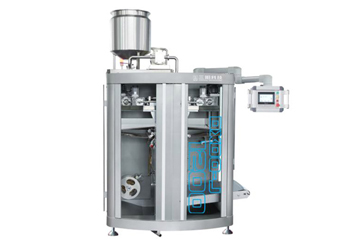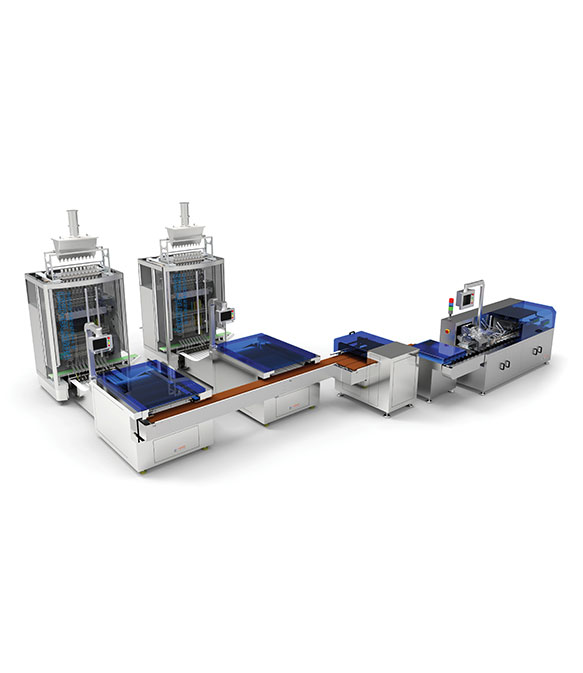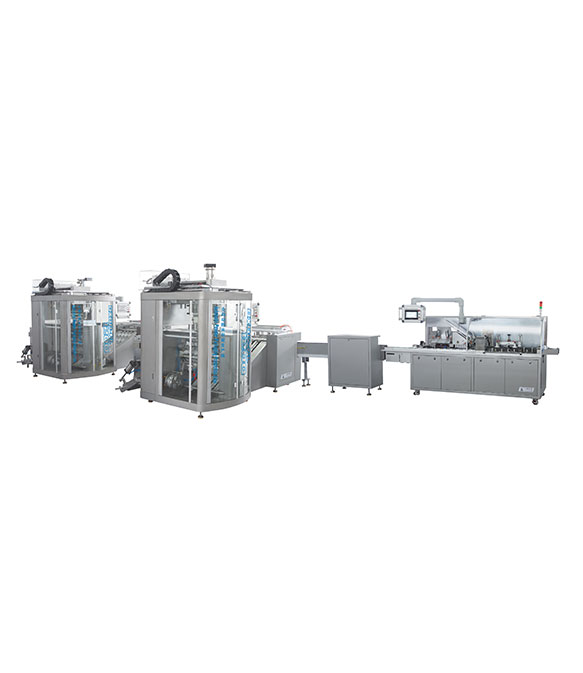Powder products are everywhere—from the coffee that jumpstarts your morning and the protein powder in your post-workout shake to the spices that flavor your dinner and the pharmaceuticals that keep you healthy. Behind the consistent, clean, and efficient packaging of these products lies a critical piece of technology: the powder packaging machine.
Choosing and operating the right machinery is paramount to the success of any business dealing with powders. This ultimate guide will walk you through everything you need to know, from the basic principles to advanced maintenance tips.
What Is a Powder Packaging Machine?
A powder packaging machine is an automated or semi-automated system designed to accurately measure, fill, and seal powdered products into various types of packaging, such as pouches, bags, jars, cans, or cartridges. These machines are engineered to handle the unique challenges posed by powders, including dust control, precise measurement (as powders can be compactable and aerate), and maintaining product integrity. They are essential in industries like food and beverage, pharmaceuticals, chemicals, cosmetics, and nutraceuticals.
Basic Parts Of Powder Packaging Machine
While designs vary, most powder packaging machines share these core components:
1. Product Hopper: A stainless-steel container that holds the bulk powder before it is dispensed.
2. Auger Filling System: The heart of most powder fillers. It consists of a rotating screw (auger) inside a tube that precisely measures and moves the powder.
3. Servo Drive / Motor: Powers the auger, allowing for precise control over its rotation and thus the amount of product dispensed.
4. Filling Nozzle: The outlet through which the powder is dispensed into the packaging. Often designed with dust collection systems to prevent spillage and cross-contamination.
5. Weighing System (Scale): In auger systems, a load cell continuously weighs the container and stops the auger once the target weight is reached. Volumetric cup fillers are an alternative.
6. Packaging Material Holder & Former: For bagging machines, this holds the roll of film and forms it into a bag shape (e.g., from a flat roll to a pillow pouch).
7. Sealing Jaws: Heat-sealing elements that create airtight seals on the packages.
8. Control Panel (HMI): The user interface (often a touchscreen) where operators set parameters like fill weight, speed, and seal temperature.
How Does Powder Packaging Machinery Work?
The process can be broken down into a few key steps:
1. Loading: Bulk powder is loaded into the product hopper.
2. Measuring: The auger rotates, moving a specific volume of powder down the tube. The number of rotations (or partial rotations) is precisely calculated to deliver the target weight. Alternatively, a cup dips into the powder, fills a measured volume, and then dumps it.
3. Dispensing: The measured powder is dispensed through the nozzle into the waiting container or bag. The nozzle often touches the container to minimize dust.
4. Sealing: The filled package is moved to the sealing station. Heated jaws press together to melt the packaging layers and create a hermetic seal.
5. Discharge: The finished, sealed package is conveyed out of the machine for collection, coding, and boxing.
Type Of Powder Packaging Machine
Machines are categorized by their level of automation and filling principle.
By Automation Level:
-
Semi-Automatic: Requires an operator to place each bag or container under the fill nozzle manually. Ideal for low-volume production, pilot batches, or small businesses.
-
Automatic: Integrated into a full production line. The machine automatically forms bags, fills, and seals them at high speeds without constant operator intervention.
-
By Filling Principle:
-
Auger Filler: The most common and precise type. Uses a rotating screw to measure and dispense product. Excellent for a wide range of powders, from free-flowing to sticky and abrasive.
-
Volumetric Cup Filler: Uses a cup of a fixed volume to scoop and dump product. Less precise than auger fillers but faster and simpler. Best for uniform, free-flowing powders where extreme accuracy is less critical.
-
Net Weigh Scale Filler: A highly accurate system where powder is weighed in a chamber before being released into the package. Often used for large, coarse, or difficult-to-handle powders.
Things To Know To Choose The Best Powder Packaging Machine
Selecting the right machine is a significant investment. Consider these factors:
1. Product Characteristics: Is your powder free-flowing, fine, coarse, abrasive, aeratable, or hygroscopic (absorbs moisture)? This is the most critical factor.
2. Required Accuracy: What is your acceptable weight tolerance? Auger fillers with servo motors offer the highest precision (±0.1-1%).
3. Production Speed (Output): How many packages per minute (PPM) or hour do you need to produce?
4. Packaging Type & Size: Are you filling premade bags, pouches, jars, or cans? What is your range of package sizes?
5. Budget: Consider not only the initial purchase price but also the cost of maintenance, spare parts, and potential future upgrades.
6. Compliance Requirements: If you are in pharmaceuticals or food, you may need a machine built to specific standards (e.g., USDA, FDA, cGMP) with easy-to-clean (sanitary) designs.
Installation Of Packaging Machine For Powder
Proper installation is key to performance and longevity.
1. Site Preparation: Ensure you have a level, stable floor with adequate space for the machine and material flow. Verify power requirements (voltage, phase).
2. Environment: Install in a clean, dry, and climate-controlled area to protect the electrical components and prevent powder from absorbing moisture.
3. Professional Setup: While semi-automatic machines can be simpler, always rely on the manufacturer or a certified technician to install and calibrate automatic lines. They will ensure it is level, connected properly, and calibrated for your specific product.
4. Operator Training: Ensure all relevant personnel are trained on basic operation and safety procedures before use.
Powder Packaging Machine Maintenance Tips
Preventive maintenance prevents costly downtime.
1. Daily: Clean all product-contact parts thoroughly. W down exterior. Visually inspect for wear and tear.
2. Weekly/Monthly: Lubricate moving parts as per the manufacturer's manual. Check seals and gaskets for damage. Calibrate the weighing system.
3. Annually: Schedule a full professional service to inspect motors, drives, and electrical systems.
4. General: Always keep a log of maintenance activities. Stock critical spare parts like augers, seals, and fuses to minimize downtime.
Conclusion
A powder packaging machine is a sophisticated and vital asset that drives efficiency, consistency, and profitability for powder-based products. By understanding how they work, the different types available, and the key factors in selecting and maintaining one, you can make an informed decision that will serve your business for years to come. Investing time in proper selection, installation, and maintenance is not an expense—it's a guarantee of quality and reliability.
FAQ
Q1: How accurate are powder packaging machines?
A: Accuracy depends on the type of machine and the product. Auger fillers with servo motors are the most precise, typically achieving accuracies within ±0.1% to 1% of the target weight. Volumetric fillers are less precise, often in the ±1-3% range.
Q2: Can one machine handle different types of powders?
A: Yes, but it often requires adjustments and potentially different tooling. For example, switching from a free-flowing to a sticky powder might require changing the auger design (e.g., from a single to a double helix) and recalibrating the system. Always consult the machine manual.
Q3: How do I control dust during packaging?
A: Modern machines are designed with dust containment in mind. Look for features like integrated dust collection ports that connect to a vacuum system, fill nozzles that dip into the container, and enclosed design. Proper machine adjustment is also key.
Q4: What is the difference between volumetric and auger filling?
A: Volumetric filling uses a fixed-volume cup to measure product, making it faster but less accurate. Auger filling uses a rotating screw to measure by both volume and density, making it slower but far more precise, especially for difficult powders.
Q5: Are powder packaging machines easy to clean?
A: It varies by model. High-end machines, especially for food and pharma, are designed with sanitary principles: quick-release parts, polished stainless-steel surfaces, and minimal crevices. Always check the machine's clean-in-place (CIP) or disassembly capabilities for your specific hygiene requirements.








